
Guide
History of computing part 4: Transistors - thanks to them your computer runs
by Kevin Hofer

Tube radios are large, mostly wooden boxes that probably stood in every parlour in the interwar years and later. We had one of these in my mum's room. In my latest project, I am installing a PC in a tube radio.
A nostalgic scent wafts towards me as I enter the attic in my parents' house. It actually smells musty, just like it does in the attic. And this isn't Rosamunde Pilcher, so from now on I'll leave the pompous writing style alone. Nevertheless, attics are places of memory and their smell always makes me nostalgic.
Before I digress any further, I'd better tell you why I'm up here. I'm looking for the old tube receiver that my mum used to have in her room. Tube receivers are those huge, old wooden boxes that used to be used as radios and are now used as collectors' items or for craft projects. My mum never listened to the radio with it, but she did listen to records with the integrated record player.
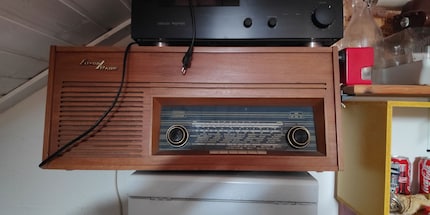
In fact, in a corner I discover the good piece. It looks exactly as I remember it. I can hear Star Dust by Louis Armstrong in my ears. My mum used to listen to that song all the time. I take the tube receiver home. I'm planning to install a PC in it.
Tube receivers appeared in the 1920s. In the interwar years and later, Family members gathered in front of the box to check the latest news, where today we quickly pull out our smartphones. They were in almost every parlour until the late 50s / 60s.
Electron tubes are used to generate, rectify, amplify or modulate electrical signals. Even today, the electron tubes that powered the tube receivers are not completely obsolete: there are still tube amplifiers that are particularly popular with audiophiles and guitarists. However, most electronic devices today use transistors.
On arriving home, I can hardly wait to take the Luxor radio apart. Before I get started, I want to know whether it's still working at all. I plug it into the mains. Or rather, I try to. As my rented flat was completely renovated a few years ago, I only have type 13 sockets. They are recessed and so I can't get the flat plug to connect to the mains. I would need a type 12 socket.
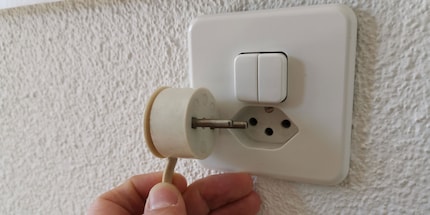
In the depths of my block of flats, I find what I'm looking for: There's still an old type 12 socket in the basement. For the first time, I'm glad that the homeowners don't invest much in the common areas. I plug the good thing in and... Nothing happens. Not even after a minute. Electronic tubes have to warm up first, which is why I give the appliance a little longer.
Now I no longer have a guilty conscience about taking the Luxor radio apart. I'm still careful not to break anything. If you are interested in the parts, write me an e-mail, just click on my author profile. I'll then send them to you. These things should be easy to repair with experience, as I've seen in several YouTube videos. You would have to build a housing yourself.
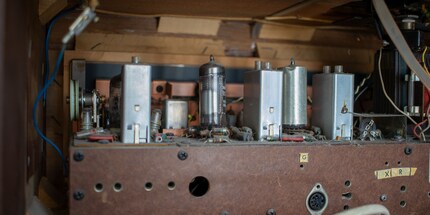
Access to the components is via the rear or underside. The rear panel is made of hardboard and can be easily removed. I can immediately see the characteristic electron tubes. The two silver "towers" must be the ZF amplifiers. I also recognise the transformer. Then my "knowledge" of what the inside of a tube radio looks like comes to an end.
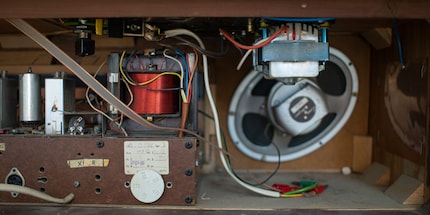
To get a better view of the components, I remove them. They are screwed on at the bottom. I loosen the screws and remove all the electronics, except for the record player and the speaker, in one block. Now the view is clear.
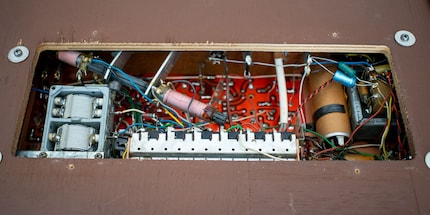
The Luxor radio has six electron tubes. The designation is printed on each tube. All six tubes start with the designation E. This means that the tubes are heated with 6.3 volts DC/AC at a heating current of 0.3 amps.
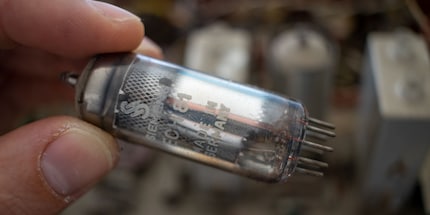
Each tube has its own function. The EMB84, which is located on the left just behind the display when viewed from behind, is a display tube. In the Luxor radio, it was used to tune the transmission frequency. The ECC82, EL84, EBF89, ECH81 and ECC85 tubes are also installed. These are electron tubes in different frequency ranges. I don't know exactly which one is for what. Please write it in the comments column if you are familiar with it.
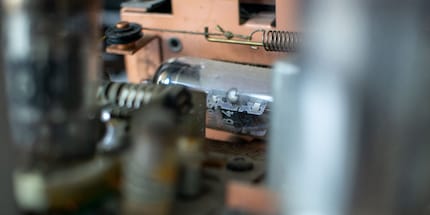
In addition to the tubes and the dusty capacitors, I find the mechanics for setting the transmitters fascinating. But see for yourself:
If I have understood correctly, the ECC85 electron tube is responsible for the transmitter frequency and you set it using the mechanism. But that's just it: My "knowledge" of tube receivers is very limited. If you know better, please write it in the comments column.
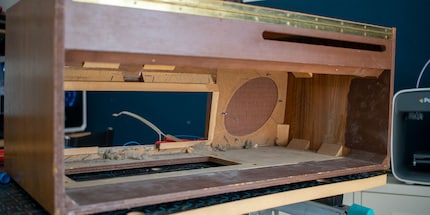
Finally, I remove the record player. It's not attached at all and I can easily remove it. Hollowed out like this, the casing of the tube radio looks dreary and makes me a little wistful. I used to love listening to it too - even though Louis Armstrong made my ears bleed back then.
At least there will soon be new life in the case. Hopefully it will give me as much pleasure as my mum's tube radio used to.
I'm now going to start measuring the good thing and transfer it to CAD. This way, I can estimate more or less exactly which PC components I want to install where. I'll tell you about that next time.
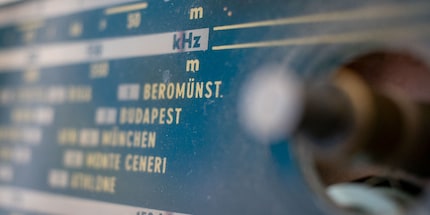
From big data to big brother, Cyborgs to Sci-Fi. All aspects of technology and society fascinate me.
Interesting facts about products, behind-the-scenes looks at manufacturers and deep-dives on interesting people.
Show all